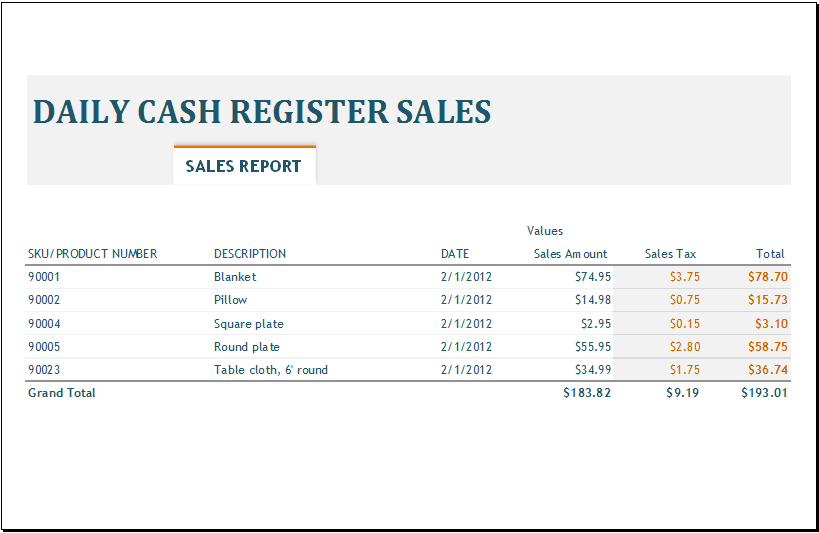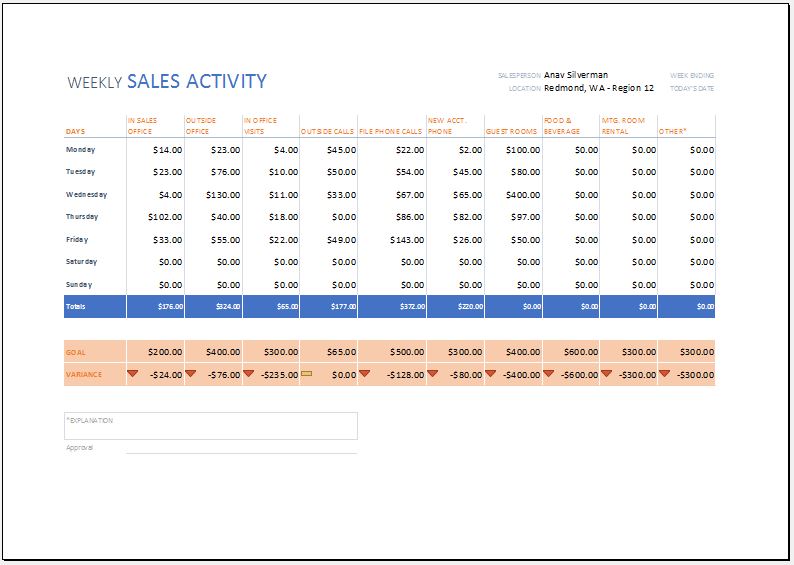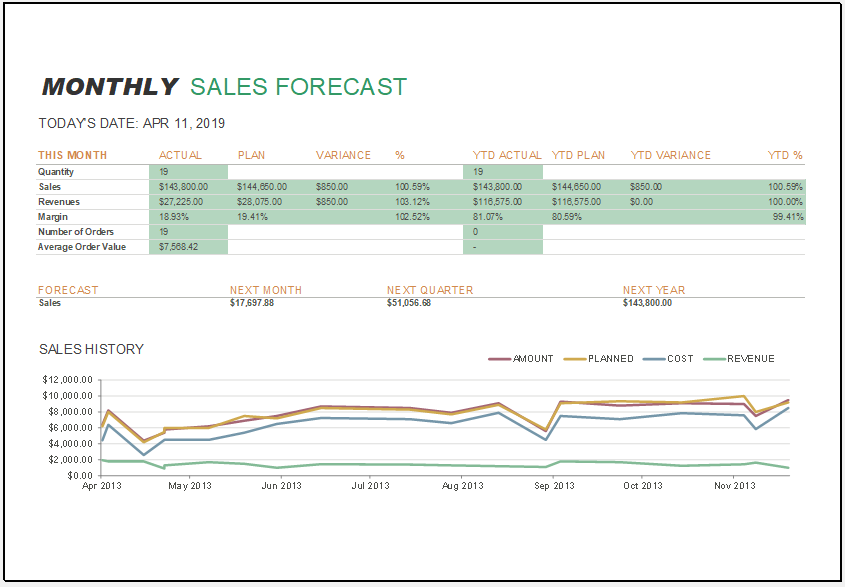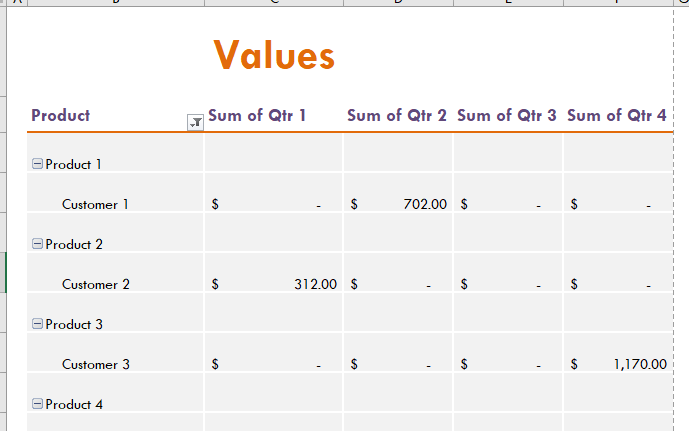Sales reports are the documents prepared by the sales department of an organization to state the sales details and portray the overall position of the sales. This report is, usually, prepared for the management to get an idea about the sales figures, the difference between budgeted and real sales, projected sales, reasons for high or low sales, etc. Sometimes, these reports, with variations, can be viewed by other stakeholders as well.
A sales report can be beneficial for the management as well as the sales team and department for various reasons, such as:
- It can prove to be an effective communication tool between the sales department and the management.
- The management can keep a check as well as motivate the sales team for better performance if they are aware of the sales scenario through the sales report.
- The sales department, by providing the reasons related to unfavorable circumstances, can justify the low sales.
- The discrepancies between the budgeted and real sales can drive the sales efforts and direct the sales strategy for the next period.
- Having the projected sales figures, the team would know their targets and the management would be able to track the performance.
- Usually, the income of the sales team is commission-based and related to the number of sales they generate. The targets stated in the sales report can push the team to achieve them and earn high commissions.
The frequency of preparing the sales report is, usually, decided by the management or the stakeholders. It can be prepared on a daily, weekly, monthly, or annual basis.
Daily Sales Report
As the name suggests, it is prepared on an everyday basis. It records and maintains the sales that occur in one day and short analysis is produced. This type of sales report is mainly applicable to small or medium-sized businesses. In large business corporations, although each and every sale is recorded, the management is more interested in an overall sales scenario, rather than in a daily sales figure, which is why the sales report is not generated on a daily basis in big companies.

Weekly Sales Report
A weekly report of sales is prepared at the end of every week and provides a record and situation of sales throughout the week. Usually, small to medium-sized businesses prepare this type of sales report.

File: Excel (.xls) 2007/+ and iPad Size 15 Kb | Download
Monthly Sales Report
The sales of the month will provide a better idea to the management regarding the sales situation, as compared to a daily or weekly report. The analysis of one month’s sale can point out the issues that need to be addressed for the coming months, so to reach the yearly targets effectively.

File: Excel (.xls) 2007/+ and iPad Size 15 Kb | Download
Annual Sales Report
This sales report provides an overall picture of the sales throughout the year. The reasons for high and low sales, the discrepancies between the actual and budgeted sales, and the projected sales of the next year direct the company’s marketing and promotional strategies for the upcoming year. In addition, many targets and policies, e.g. related to production, supplier selection, etc., may be altered as well.

File: Excel (.xls) 2007/+ and iPad Size 25 Kb | Download
Irrespective of the frequency, the preparation of sales reports is a continuous process, which is why the companies or sales departments utilize a template for reducing the time required to prepare the report every time from the scratch. The template used may be self-developed or chosen from a wide variety of readymade templates available online or in the programs, such as Microsoft Excel. The template can be customized as per the requirements of the sales department and the organization as well as the time duration of the report. The included details may vary, but, generally, the following details are included in almost all the reports:
- Report date.
- Covered time-period of the report.
- Details of the sales department.
- Details of the management.
- Budgeted and actual sales for the stated time as well as the discrepancies, if any.
- Trends in sales increase/decrease. Graphs are usually used.
- Reasons associated with those trends.
- Issues experienced by the sales department or problems with the products/services or the required improvements/modifications.
- Strategies to become more competitive and increase sales, such as promotional strategies, better quality, price competitiveness, etc.
- Projected sales for the next period, if applicable.
The management needs to suitably decide if their policy direction should be toward the outcome metrics or the process metrics. In the former, the management is focused on the sales’ income generation, while in the latter, the sales processes are analyzed.
The outcome metrics are indirectly affected by the sales team, but the team directly impacts the process metrics. If, for instance, the economic situation of a country was not good enough for generating the targeted sales, for analyzing the performance of the sales team, the management should look at the process metrics instead of the outcome metrics.
